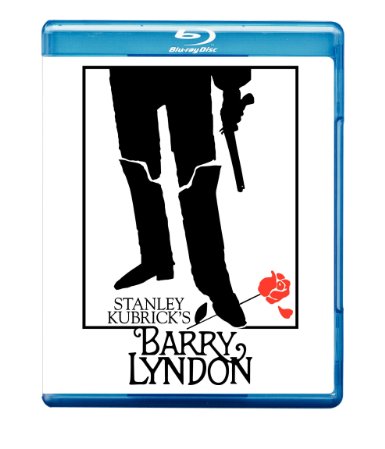
Barry Lyndon by Stanley Kubrick
Burning Like Ice
In this day and age of fast-paced living, why would you want to spend three hours on an adaptation of a Thackeray novel? What can you learn from the protagonist and the other characters, those bewigged puppets? What can they tell you in their quaint eighteenth-century English?
Well, not much if you watch films only to relax after a hard day’s work, although there is nothing wrong with that, of course.
Or if you avoid works that unveil the dark side of human nature and dispel any beautiful illusions you still might have about ourselves.
Or if you prefer movies based on human-interest stories, which radiate goodness and warmth, or even invite you to identify with some particularly likeable character.
If you like such movies, give Barry Lyndon a miss.
Why?
Because you will be bored stiff by its slow pace. Chilled to the bone by the sarcasm, scoffing and mockery. And put off by the hypocrisy of its characters, hidden behind the façade of honeyed words and charming smiles. Anyway, it’s possible you won’t take Barry Lyndon seriously, because the world it shows looks so different from the one you know. Nobody, for instance, wears such extravagant clothes, fanciful hats or eye-popping wigs these days. Besides, corporal punishment and dueling have been replaced with positive discipline and interminable, costly litigation.
We have come a long way since the Age of Reason, also known as the Age of Enlightenment.
On the other hand, I do recommend Barry Lyndon if you enjoy slow-paced films that encourage us to take a good look at the plot, the characters and their motives, the structure and the themes, the camerawork or a particular shot. I strongly recommend it if you like cerebral filmmakers, who make us watch their movies analytically, just as we view, or should view, paintings in a museum. Barry Lyndon could in fact be described as a gallery of eighteenth-century paintings brought to life by twentieth-century technology.
I have no doubt you will appreciate Kubrick’s mastery of his art – his virtuosity, his attention to detail, his unerring sense of composition.
Take, for example, the humiliating seduction scene, with Nora Brady as the temptress, after which Barry’s troubles began; the instructive encounter with a witty highwayman; the sidesplitting parade of the British Grenadiers, followed by a traditional dance Kubrick has turned into a grotesque caper of human dummies; the concert of J.S. Bach’s music, cut short by Lord Bullingdon’s rude entrance; or the wordless signing of checks (with the Epilogue It was in the reign of George III that the aforesaid personages lived and quarelled; good or bad, handsome or ugly, rich or poor, they are all equal now).
Note also the perfectly arranged soundtrack, particularly two unforgettable pieces: Andante con moto from Schubert’s Piano Trio in E-flat major, Op. 100 and Handel’s Sarabande.
It might come as a surprise to you that Kubrick shot Barry Lyndon in natural light, so as to make each image look like an eighteenth-century painting. To put it somewhat simplistically, he used little or no electric lighting for the open-air or candlelit scenes, and if the sun, the candelabras or the oil lamps did not provide enough light, he switched to camera lenses used by NASA for the Apollo program.
You’ll find it interesting that Kubrick took a whole year to research eighteenth-century music (“I think I must have listened to every LP you can buy of eighteenth-century music – S.K.”); art (many of the scenes in Barry Lyndon were inspired by paintings of Thomas Gainsborough, William Hogarth, John Constable, Joshua Reynolds, George Stubbs, et al.; architecture, interior design and everyday products (On Barry Lyndon, I accumulated a very large picture file of drawings and paintings taken from art books. These pictures served as the reference for everything we needed to make – clothes, furniture, hand props, architecture, vehicles, etc. – S.K.); and fashion (designs for the clothes were all copied from drawings and paintings of the period. None of them were designed in the normal sense – S.K.).
Finally, Barry Lyndon will open your eyes to, or confirm your views on, things that should never be discussed with the best people (one of the characters says: My friends are the best people. I don’t mean they’re the most virtuous or, indeed, the least virtuous, or the cleverest or the stupidest, richest or best born. But, the best. In a word, people about whom there is no question).
What things do I mean?
Martin Scorsese may have put it best:
I’m not sure if I can say that I have a favorite Kubrick picture, but somehow I keep coming back to Barry Lyndon. I think that’s because it’s such a profoundly emotional experience. The emotion is conveyed through the movement of the camera, the slowness of the pace, the way the characters move in relation to their surroundings. People didn’t get it when it came out. Many still don’t. Basically, in one exquisitely beautiful image after another, you’re watching the progress of a man as he moves from the purest innocence to the coldest sophistication, ending in absolute bitterness—and it’s all a matter of simple, elemental survival. It’s a terrifying film because all the candlelit beauty is nothing but a veil over the worst cruelty. But it’s real cruelty, the kind you see every day in polite society.
Barry Lyndon is a masterpiece that entertains, delights, provokes, and terrifies in equal measure.
And, as Baudelaire would say, it burns like ice.
© by Krzysztof Mąkosa
Director: Stanley Kubrick
Starring: Ryan O’Neal, Marisa Berenson
Supporting actors: Patrick Magee, Leon Vitali, Hardy Krüger, Diana Koerner, Steven Berkoff, Gay Hamilton, Marie Kean, Murray Melvin, Frank Middlemass, Arthur O’Sullivan, Leonard Rossiter, Philip Stone, et al.
